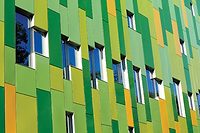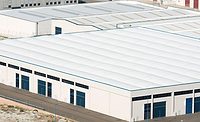Ceramic Elastomeric Coatings Top Solar Reflectance Index

The solar reflectance index, or SRI, is a measurement to determine a surface’s ability to reject solar heat. Solar reflectance is the amount of solar energy or UV rays that is reflected away from a surface, back into the atmosphere. The higher the solar reflectance is of a coating, the less heat the surface absorbs, and in the case of a home, it means a cooler indoor ambient air temperature.
The SRI uses a scale of 0-100 with 0 being standard black and 100 standard white. Absorbent materials have lower numbers while reflective materials have higher numbers. Exterior substrates stay cool in the sun by minimizing solar absorption and maximizing thermal emittance. This technology offers numerous benefits, including increased savings on electricity bills, and reduced maintenance and replacement expenses. AmCoat’s Director of Products and Applications, Mike Moore, said SRI was originally designed to help consumers choose the most energy-efficient building materials.

“While SRI was developed with a goal to require that all building materials require a SRI, it has been very slow for manufacturers to utilize the index on their packaging,” said Moore. “It was supposed to help consumers make informed decisions but it still is not universally used. However, Rhino Shield provides all of that data for our customers, including for different colors and finishes.”
Rhino Shield’s formula has helped it outperform the high end of the index, making it an excellent thermal barrier for the siding of homes and commercial buildings. “Rhino Shield’s SRI lands between an SRI of 106 to 107, depending on sheen,” said Moore. “We also test the reflectivity of many of our colors so consumers have that information when choosing a palette. For AmCoat, it’s all about more information to the consumer so they can make informed decisions, especially concerning heat load.”
Looking for a reprint of this article?
From high-res PDFs to custom plaques, order your copy today!






